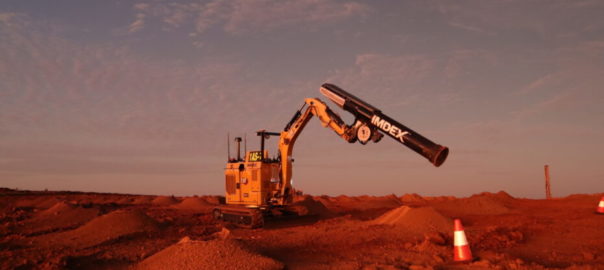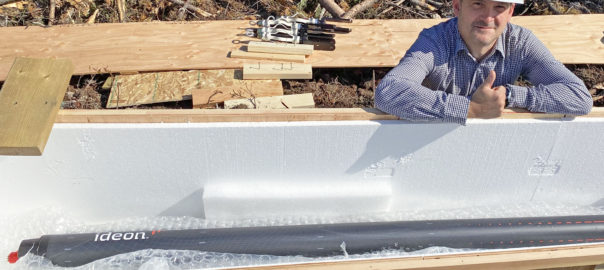Leading global mining-tech company IMDEX is collaborating on what it says is a groundbreaking study backed by Canada’s preeminent sciences research body to determine the real value of orebody knowledge (OBK) in mineral exploration and mining.
IMDEX is partnering with the Mineral Deposit Research Unit (MDRU) and the Bradshaw Research Institute for Minerals and Mining (BRIMM) at the University of British Columbia, and Ideon Technologies, a leader in applying muon tomography for orebody imaging, in the million-dollar, two-year deep dive into the economics of OBK.
The MDRU is one of the largest integrated mineral deposit and exploration research groups in the world, dedicated to solving mineral exploration-related problems. The BRIMM creates multidisciplinary teams of leading researchers to work with industry to find solutions to the biggest challenges facing the mining industry and trains the next generation of multidisciplinary professionals.
The Natural Sciences and Engineering Research Council of Canada – the major federal agency responsible for funding natural sciences and engineering research in Canada – will part-fund the study through the NSERC Alliance program.
IMDEX Chief Geoscientist, Dave Lawie, said the research findings would contribute to knowledge on the economic benefits of enhanced OBK, promote adoption of new technologies, and help define future research and development directions in the mining industry.
“The mining industry has been slow to adopt innovative orebody knowledge approaches and data collection, despite the increasing improvement and sophistication of the technology,” Lawie said.
“One of the reasons for this reluctance is that mining companies, researchers and technology providers find it difficult to articulate the financial value of OBK; to explain in dollar terms the financial gain of being able to make better decisions earlier and reduce risk from greenfields exploration through to mining production.
“Clearly articulating the dollar value of OBK also assists in the adoption of technology where the cost is born in one part of an operation or organisation, but the dollar benefit is accrued in a different department or during a separate phase of development. It helps address the question, ‘Who will pay for what does not happen?’ where operational risk reduction is the key driver.
“Without quality OBK, companies are taking unnecessary mine development risks.
“For the mining industry to adopt this technology, it must have clear evidence of the financial impacts and risks of poor or no OBK and a way of assessing the most efficient methods of collecting, analysing and optimising it.”
IMDEX says it is leading the development of innovative orebody knowledge technology including through its IMDEX BLAST DOG™, a semi-autonomously deployed borehole sensing and physical measurement technology that provides near real-time orebody knowledge and physical information of the blast hole.
The company also has extensive experience in directional core drilling capabilities through its acquisition of Devico and its leading technology, which has benefits particularly in the search for deep mineral deposits.
Ideon’s technology generates images of orebodies deep beneath the Earth’s surface, up to 1 km below ground level, and has proven effective in detecting deep orebodies, which are challenging to locate using traditional methods, according to IMDEX.
“As exploration increasingly targets greater depths, deep OBK and efficient, environmentally sound methods of drill testing will become more relevant for making accurate early estimates of mineral reserves at speed,” Lawie said.
Senior researchers at UBC will drive the study along with a range of postdoctoral experts. The study will analyse mine projects completed over the past 23 years, integrating information from the Toronto Stock Exchange and the Australian Securities Exchange with the respective countries’ mine project reporting codes, the NI 43-101 and the JORC code, to assess the link between OBK – or lack of it – and mine project performance.
Other elements of the study will:
- Quantify the write-down value attributable to orebody complications;
- Quantify the link between OBK and mine project performance;
- Assess the cost of obtaining OBK against the potential value lost in the project; and
- Develop a risk assessment tool to allow companies to design work programs to optimise OBK and reduce project risk.
Lawie said previous UBC research by John Steen, Michael Samis and Andrew Gillis covering the period 2003 to 2016 revealed that geoscientific challenges were associated with financial losses by mine projects in at least 30% of cases, presenting the Value of Information case that has now expanded into the economic benefits of enhanced orebody knowledge.
This research will provide a starting point for the study using advanced data collection and interpretation to better understand the geological risks associated with mine development projects.
“To our knowledge, this integrated research approach has not been previously attempted,” Lawie said.








